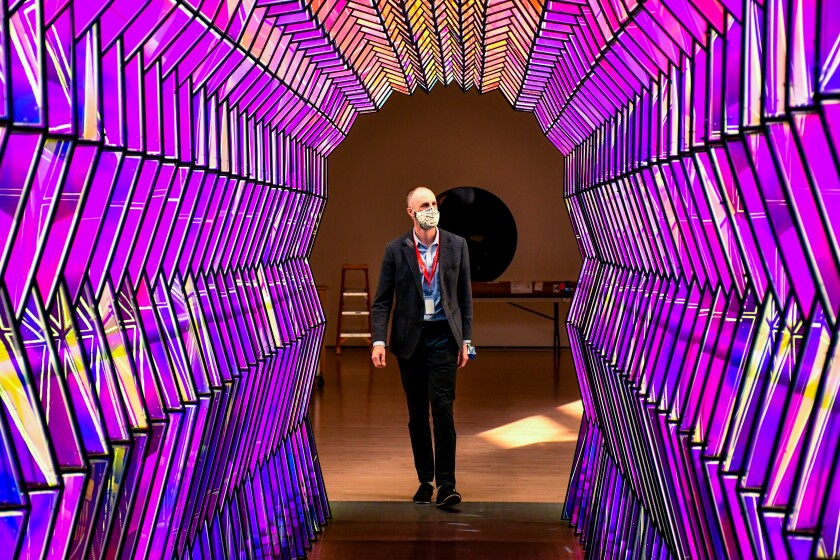Guests observe the “Approaching American Abstraction” exhibit at the San Francisco Museum of Modern Art (SFMOMA) in March.
(Gary Coronado/Los Angeles Times)
The San Francisco Museum of Modern Art reopened March 7. A few days later, Chief Administrative Officer Noah Bartlett stood near the entrance, remembering the start of the pandemic a year ago.
“We assumed it was going to be six weeks,” he said. “So naive, right?”
Since then, Bartlett and the museum’s core employees have rescheduled exhibitions, rethought budgets and mapped “every surface the people would come in contact with,” including elevator buttons, now covered by NanoSeptic self-cleaning pads.
“We like to say that we’re one of the safest indoor experiences you can have. You and I can move through this building without touching anything,” Bartlett said.
But he also understands that the recovery might go slowly. The museum’s three restaurants remain closed. Moscone Center across the street, previously one of the busiest convention venues in the nation, is a vaccination site.
Before the pandemic, Bartlett said, up to 60% of the museum’s visitors were from outside the Bay Area, and daily attendance rarely fell below 2,000. For its grand reopening, the museum drew about 3,500 over two days.
“The energy has changed,” Bartlett said. “We’re going to remain in a depressed state, I think, probably for a few years,” Bartlett said. “It’s really accelerated our focus on local audiences.”
Noah Bartlett, chief administrative officer at San Francisco Museum of Modern Art, in ”One-Way Colour Tunnel.”
(Christopher Reynolds / Los Angeles Times)
On its fifth floor, the museum will soon open an exhibition called “Contemporary Optics.” As an installer readied the galleries, Bartlett stepped onto the Oculus Bridge — the showcase walkway that hangs four floors above the museum lobby — and strode into artist Olafur Eliasson’s ”One-Way Colour Tunnel,” which sparkled like purple ice.
This, Bartlett said, is a silver lining: A visitor now “can really get the museum insider’s experience — time alone with artworks.”







